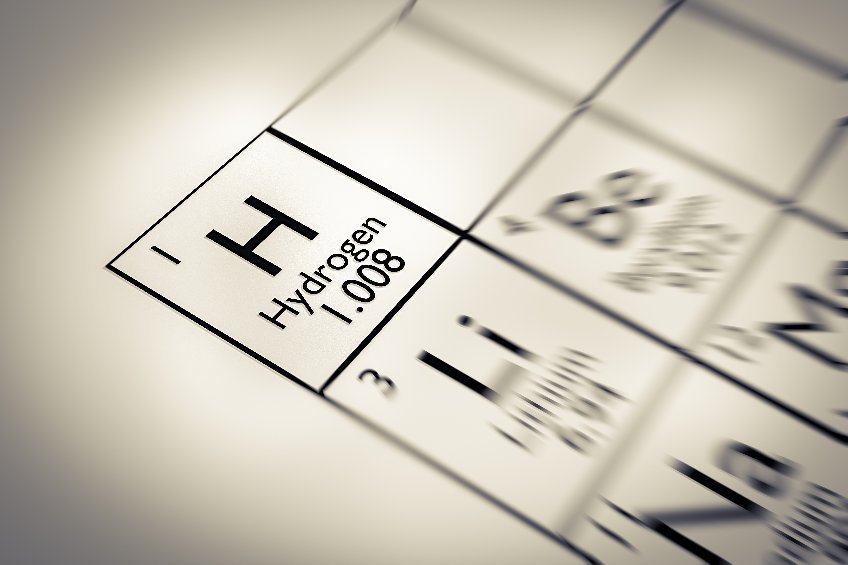By Gov. Mike Dunleavy:
Alaska, at the Northwest corner of the U.S., and hydrogen, at the top left of the periodic table, share more than a common location on their respective charts. Global energy consumption is forecast to grow 50% by 2050, and hydrogen from Alaska can provide solutions to the world’s energy and climate needs for decades.
Hydrogen demand is set to skyrocket. Alaska is in a great position to accelerate commercial-scale clean hydrogen production and capture an outsized portion of the market.
Hydrogen demand is driven by its energy and environmental advantages. Hydrogen is an abundant, energy-rich element with the highest energy mass of any fuel. We’ll never run out of hydrogen. Burning hydrogen to generate energy produces zero carbon and emits only harmless water and air.
Because of these advantages, policymakers are providing powerful incentives to spur the creation of a clean hydrogen energy industry. The 2021 Bipartisan Infrastructure Act, passed with the support of Alaska’s Congressional Delegation, includes up to $7 billion to establish six to 10 regional clean hydrogen hubs across America, and Alaska has everything going for it in this competition.
Expanding economies and populations in Asia are driving growing energy needs. Developed nations like Japan and South Korea are banking on hydrogen to meet 2050 net-zero carbon targets. These nations are our strongest allies in the region and have deep trade ties to Alaska due to our close proximity.
Japan’s long-term strategy is to create a complete, end-to-end hydrogen ecosystem, including “a global supply chain and constructing onsite storage facilities in Japan.” Mitsubishi Corporation and TOYO Engineering Corporation, two leading Japanese energy companies, are already working in Alaska with the state’s Alaska Gasline Development Corporation and Hilcorp to evaluate the commercial feasibility of producing clean hydrogen in the form of carbon-free ammonia. Similarly, South Korea is ramping up demand for hydrogen from 130,000 tons per year in 2018 to an estimated 5.26 million tons in 2040.
Hydrogen is effectively stored and used in fuel cells, which contain more power in comparable space than electric batteries, making hydrogen “suited for airplanes or ships that have to carry energy supplies long distances,” according to the Wall Street Journal.
Ted Stevens International Airport in Anchorage is the second-largest air cargo hub in the world, strategically located between North America and Asia, positioning Alaska to have a major role in global decarbonization by fueling this vital supply route with hydrogen. Alaska is also home to strategic North Pacific military facilities, and the Defense Department, the world’s single largest institutional user of petroleum, is closely examining the long-term prospects for incorporating hydrogen fuel into military operations.
Alaska’s resources give us a major competitive advantage in the race to produce hydrogen. First, Alaska has an abundance of untapped natural gas. The North Slope reigns as one of the world’s great energy super basins in part because it contains 40 trillion cubic feet of developed and conventional, but stranded, natural gas.
Natural gas will not only enjoy decades of additional growth as a standalone clean energy source, but is also essential for producing clean hydrogen. The methane in natural gas is naturally rich in hydrogen, and natural gas accounts for 95% of U.S. hydrogen production today.
The Alaska LNG Project, with all major permits and authorizations in place, is poised to finally commercialize North Slope natural gas and is negotiating with developers and investors to complete engineering and begin construction.
Alaska LNG is already designed as one of the lowest-emissions LNG projects in the world. Further environmental benefits will be unlocked when Alaska LNG natural gas is used to produce hydrogen. By safely capturing and storing the carbon released in this process, the carbon intensity of hydrogen production is negligible. The Alaska LNG terminal will be located in Cook Inlet, which features geology capable of storing 50 gigatons of carbon, the highest capacity of any location on the U.S. West Coast according to scientists. For perspective, 50 gigatons is the equivalent of several decades of carbon emissions from the entire nation of Japan.
Establishing ourselves as an early dominant hydrogen provider ensures we will have the infrastructure, knowledge, and market acumen to also use renewables like hydropower, tidal, and wind to produce hydrogen as technology matures and scales. These resources are more plentiful in Alaska than any other region of the U.S., and tapping them gives Alaska the opportunity for a diversified, world-leading hydrogen portfolio.
But perhaps our most potent advantage in the shifting energy landscape is our people. Alaska is home to a highly trained energy workforce committed to some of the toughest environmental standards in the world. For generations, Alaskans have thrived by using our resources responsibly and sustainably. Alaska has been an energy leader, fueling America’s economy for decades. Alaska has what it takes to become a global hydrogen powerhouse and lead the world into a new clean energy era.
Mike Dunleavy is Alaska’s 12th Governor and began his first term of office in December 2018.
